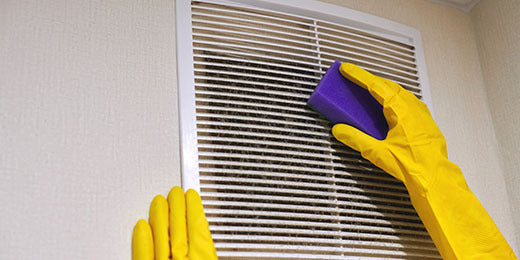How to Check Home Air Quality? Tips From Experts

Americans spend almost 90% of their time indoors, breathing air possibly twice as contaminated as outdoor air. Your house, that refuge you go back to every day, might be hiding an invisible ecosystem of microorganisms, gases, and particles that daily impact your health. Imagine each breath you take indoors as swimming across an invisible sea.
Many homeowners have headaches, inexplicable tiredness, or worsening allergies without knowing the air quality of their house might be the cause. The good news is that making a better living environment starts with assessing the air quality in your house.
By reading this guide, you'll learn how to do an air quality check in home, find potential issues, and understand what actions to take based on your results. Consider yourself a Home Air Detective by the time you finish!
The Usual Suspects: Identifying Potential Air Pollutants in Your Home
Professional air quality specialists focus on several categories of pollutants when assessing homes. Knowing these "usual suspects" helps you become more aware of what might be affecting your indoor environment.
Biological Pollutants
These living or once-living organisms can significantly impact respiratory health:
Mold thrives in damp, humid environments like bathrooms, basements, and around leaky pipes. Dust mites are microscopic creatures that feed on dead skin cells in bedding, upholstery, and carpets. Pet dander consists of tiny skin flakes shed by cats, dogs, and other furry pets. Bacteria and viruses can circulate through homes, especially with poor ventilation.
Health effects from biological pollutants typically include allergic reactions, asthma flare-ups, and respiratory infections in susceptible individuals.
 Chemical Pollutants
Chemical Pollutants
These substances off-gas or accumulate in your home from various sources.
Volatile Organic Compounds (VOCs) are released from paints, furniture, cleaning products, and building materials. Carbon monoxide (CO) is a deadly gas produced by malfunctioning fuel-burning appliances. Radon is a naturally occurring radioactive gas that can enter homes through foundation cracks. Pesticides leave residues from indoor or outdoor pest treatments.
Chemical pollutants can cause symptoms ranging from eye irritation and headaches to serious long-term health concerns, including cancer in the case of radon exposure.
Particulate Matter (PM)
These tiny particles suspend in the air and come in different sizes. PM10 includes larger particles like visible dust, pollen, and pet hair. PM2.5 consists of smaller particles (2.5 microns or less) that pose greater health risks because they can penetrate deep into lungs. Ultrafine particles are the smallest category, capable of entering the bloodstream.
Common sources include cooking (especially frying), candles, fireplaces, smoking, and outdoor pollution that infiltrates the home.
Sensory Clues and Basic Observations
Before investing in testing equipment, use your senses as preliminary air quality detectors.
The "Sniff Test"
Your nose can detect many air quality problems:
- Musty odors often indicate mold growth
- Chemical smells might signal VOCs from new furniture or renovations
- Stale air typically suggests poor ventilation
- Burning odors could point to combustion issues
Trust persistent unusual smells as signals that something needs investigation.
Visual Cues
Keep your eyes open for:
- Black or colored spots on walls, ceilings, or around windows (possible mold)
- Excessive dust buildup around air vents
- Water stains on walls or ceilings
- Condensation on windows (indicating high humidity)
- Visible smoke or haze in the air when cooking or using combustion appliances
Feeling the Air
The feel of your home's air provides important clues:
- Air that feels humid and sticky might promote mold growth and dust mites
- Excessively dry air can irritate mucous membranes and skin
- Stagnant air often indicates poor ventilation
Health Symptoms as Indicators
Pay attention if you notice:
- Symptoms that improve when you leave home
- Allergies that worsen indoors
- Headaches, fatigue, or irritation that seems connected to certain rooms
- Multiple household members experiencing similar symptoms
While these observations aren't definitive diagnoses, they provide valuable starting points for further investigation.
 DIY Air Quality Testing Tools and Techniques
DIY Air Quality Testing Tools and Techniques
Several consumer-grade tools allow you to perform basic air quality check in home assessments without professional help.
Basic Air Quality Monitors
Consumer-grade monitors typically measure particulate matter (PM2.5), total VOCs, carbon dioxide (CO2) levels, plus temperature and humidity.
For accurate readings, place monitors away from direct air flows or heat sources. Test multiple rooms, especially bedrooms and living areas. Monitor both real-time and average readings, looking for patterns related to activities like cooking or cleaning.
Consumer monitors have limitations in sensitivity and specificity compared to professional equipment, but they provide valuable insights for everyday air quality control measures in your home.
Specific Test Kits
Carbon Monoxide Detectors
These life-saving devices should be mandatory in every home. Install them near sleeping areas and close to combustion appliances. Replace batteries according to the manufacturer's instructions and replace the entire unit every 5-7 years.
Radon Test Kits
Available as short-term (2-7 days) or long-term (90+ days) options. Place kits in the lowest lived-in level of your home and keep windows closed during the test period. Follow the kit's instructions for mailing samples to labs.
Radon is the second leading cause of lung cancer, making home air quality test for this gas particularly important in at-risk geographic areas.
Mold Test Kits
These come in several forms, including settle plates that capture airborne spores, air sample pumps that draw air across collection media, and surface swabs that collect samples from visible suspected mold.
DIY mold kits have limitations in identifying specific mold types and concentration levels. Results can be misleading with false positives or negatives, and lab analysis fees are sometimes hidden costs.
For serious mold concerns, professional testing air quality in your home offers much greater accuracy.
Humidity Monitors (Hygrometers)
Simple yet valuable tools for maintaining indoor humidity between 30-50%. Higher levels promote mold and dust mites, while lower levels can cause respiratory irritation.
Ventilation Checks
Hold a tissue near vents to check for air movement, check exhaust fan function in bathrooms and kitchens, and observe if doors close too quickly (which may indicate pressure imbalances).
Calling in the Professionals: When and How Experts Conduct Testing
While DIY testing provides useful information, certain situations call for professional expertise.
When to Call Professionals
Consider professional testing when persistent, unexplained health symptoms occur or visible mold covers more than about 10 square feet. After water damage, it's wise to verify no hidden problems remain. If you suspect hidden issues like mold behind walls or asbestos in older homes, a professional air pollution test can provide answers. When buying or selling a home, a comprehensive air quality assessment provides important information for both parties.
What Professionals Test For
Professional testing identifies specific mold species and spore concentrations, presence of asbestos fibers, lead dust levels, and a wide range of VOCs with precise identification. They can test for formaldehyde levels, pesticide residues, combustion byproducts, and perform continuous radon monitoring. Many professionals also create allergen profiles specific to your home.

The Professional Process
A typical inspection includes a detailed visual assessment of the entire home and an interview about building history and occupant health. Professionals collect multiple air samples using calibrated pumps and take surface and bulk material samples when needed. Many use thermal imaging to detect hidden moisture issues. After laboratory analysis, you'll receive a detailed report with findings and recommendations.
Choosing a Qualified Professional
Look for professionals with certification from recognized organizations (IAQA, ACAC, IICRC) and experience specific to residential settings. They should clearly explain testing methods and costs and willingly answer all your questions. Avoid conflicts of interest—testing companies that also perform remediation may have incentives to find problems. Request sample reports to evaluate their reporting practices.
Understanding Your Air Quality Results and Next Steps
Once you have testing results, you'll need to interpret them and decide on appropriate actions.
Interpreting DIY Results
For consumer monitor readings, compare results to recommended guidelines from organizations like the EPA or WHO. Look for patterns related to activities or times of day rather than focusing on isolated readings. Single high readings may not indicate chronic problems, but consistent elevated readings warrant further investigation.
For test kit results, any positive CO readings require immediate attention. Positive radon tests above 4 pCi/L require action, and positive mold test results suggest the need for professional assessment.
Understanding Professional Reports
Professional reports typically include specific pollutant types and concentrations alongside comparisons to established health guidelines. They provide detailed analysis of potential sources with site-specific recommendations and prioritized action plans based on health risk and remediation complexity.
Developing an Action Plan
Based on a home air quality test, your action plan might include addressing ventilation issues by increasing natural ventilation when outdoor air quality permits. By means of bathroom fans or kitchen range hoods, upgrading mechanical ventilation helps to significantly enhance air quality. For ongoing issues, look at whole-house ventilation systems and routinely replace HVAC filters with suitable MERV ratings.
Use dehumidifiers in damp places and take quick care of water leaks to control humidity. Make sure your house's foundation drains properly, then run bathroom fans both before and after showers.
Source control is eliminating or substituting low-VOC alternatives for paints, furniture, and cleaning agents as well as VOC-emitting products. Install radon-reducing systems if needed and properly vent your combustion sources.
For better particulate removal, a quality air purifier with HEPA filtration can dramatically reduce airborne contaminants like dust, pollen, and pet dander. Models with activated carbon can also address chemical odors and gases.
For significant issues, professional remediation may be necessary. Hire qualified contractors for substantial mold removal and use certified professionals for asbestos or lead remediation. Always follow through with post-remediation testing to ensure problems have been resolved.
FAQ
How to test the air quality in your home for mold?
Professional air sampling combined with surface testing and visual inspection provides the most reliable assessment. DIY kits offer basic screening but lack accuracy in species identification and concentration measurement. For serious concerns, certified professionals can locate hidden mold and provide specific remediation plans.
How to do air quality testing?
For general monitoring, use consumer-grade devices that track particles, VOCs, CO2, and humidity. Install UL-listed CO detectors for safety. Use radon test kits in lowest living areas. When issues persist or multiple contaminants are suspected, professional testing provides comprehensive results.
What is a good indoor air quality level?
Key indicators include: PM2.5 below 12 μg/m³, CO2 under 1000 ppm, VOCs below 500 ppb, humidity between 30-50%, zero carbon monoxide, radon below 4 pCi/L, and indoor mold spore counts similar to outdoor levels.
How often should I test my home's air quality?
Test CO detectors monthly and replace batteries annually. Check radon every 2 years or after major renovations. Monitor general air quality quarterly. Test for mold after water damage or when health symptoms appear. Consider professional assessment when buying a home or when persistent problems occur.
Can poor air quality make you sick?
Yes. Short-term effects include headaches, fatigue, dizziness, and respiratory irritation. Long-term exposure may contribute to serious conditions including asthma, heart disease, and cancer. Symptoms that improve when away from home often indicate indoor air problems.







































